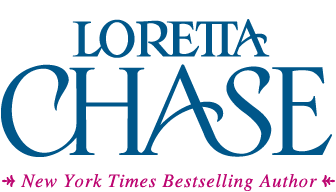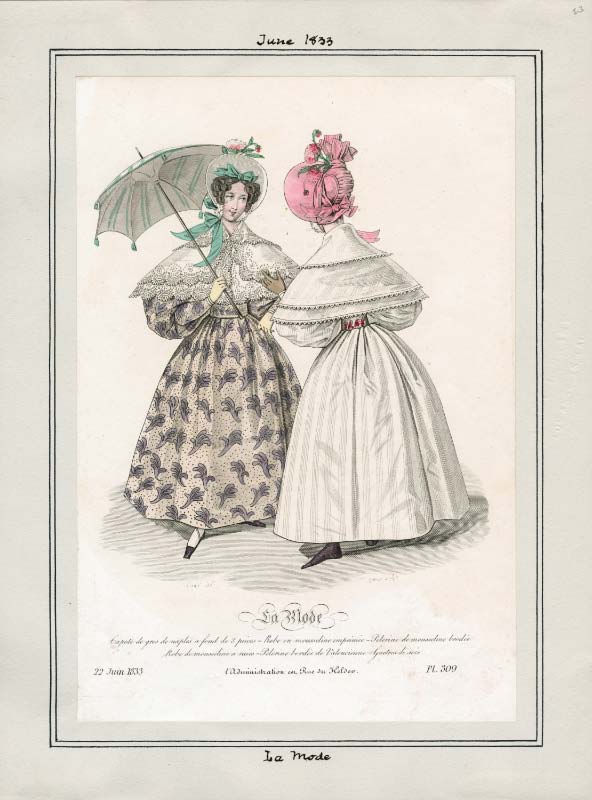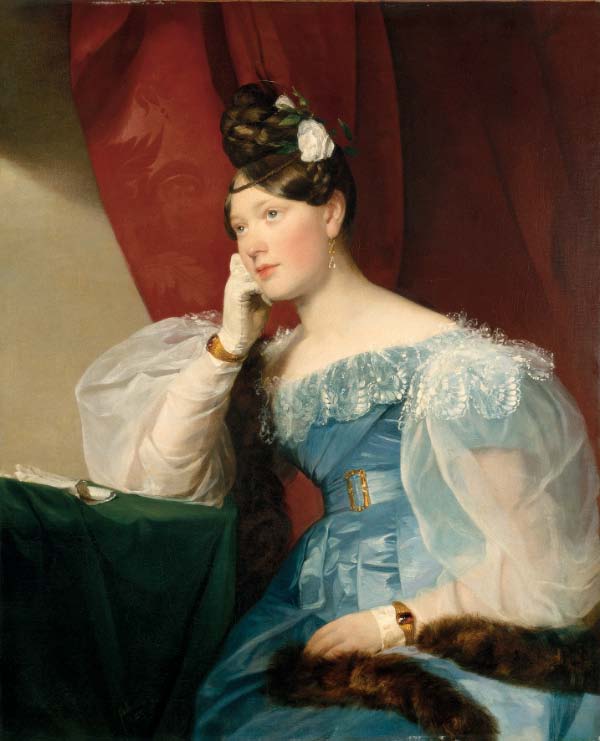A funny thing has happened in terms of my historical setting.
From the last Carsington book (Last Night’s Scandal) on, I’ve been setting my stories in the 1830s, when clothes looked very, very different from those we associate with the Regency era and Pride and Prejudice. Below are a few fashion plates displaying the vertical style of the Regency.
Many people find 1830s styles ridiculous, even hideous, but I love them because they are so flamboyant and inventive and over-the-top. I especially love this era’s fashion because it’s so complicated to put on and take off, which makes for interesting intimate scenes between hero and heroine.
Mainly we see historical dress in fashion plates, where it does look cartoonish, as fashion plates tend to do. Then as now, the images are stylized. For instance, the pelerines and canazous look like stiff white capes jutting out over the dresses’ enormous sleeves. The images below are from the Los Angeles Public Library Casey Fashion Plates collection.
We can get a better sense of the clothing in portraits, like this one. But in portraits, people are posed. The fabric may drape beautifully, but everything is frozen.
Images in museums show the clothing on mannequins, often headless. Sometimes there’s no mannequin, only the dress. Rarely do we see an entire ensemble.
Margaret Sarah Carpenter, Portrait of Harriet Brudenell, Countess Howe
So imagine my excitement recently to discover, thanks to author Susan Holloway Scott, that a group of historical dressmakers and re-enactors have turned their dressmaking skills to recreating 1830s fashions. I can tell you it’s already made a difference in how I’ve handled the most recent occasion of the hero getting his hands on the heroine.
In case you were curious about 1830s corsets, here’s a video.
This blog post deals with making and adorning an 1830s dress.
A group of talented dressmakers invade the Dickens Fair in 1830s fashions.
Let’s not forget headwear.
And this 1833 dress is from about time of my Difficult Dukes series.




















